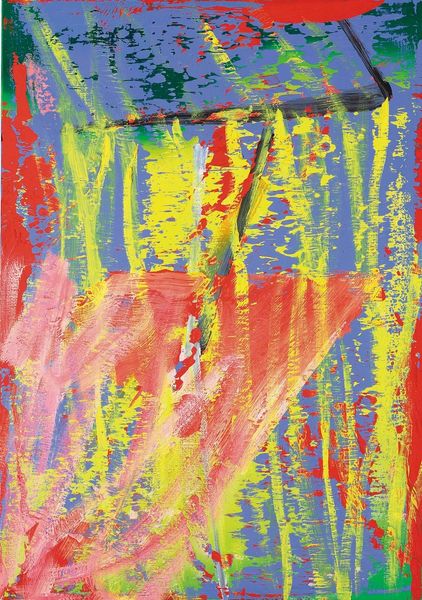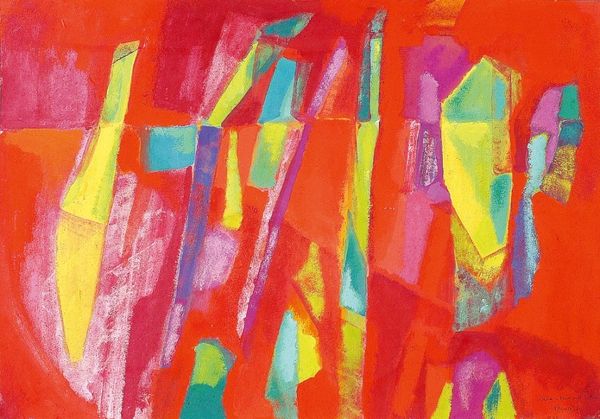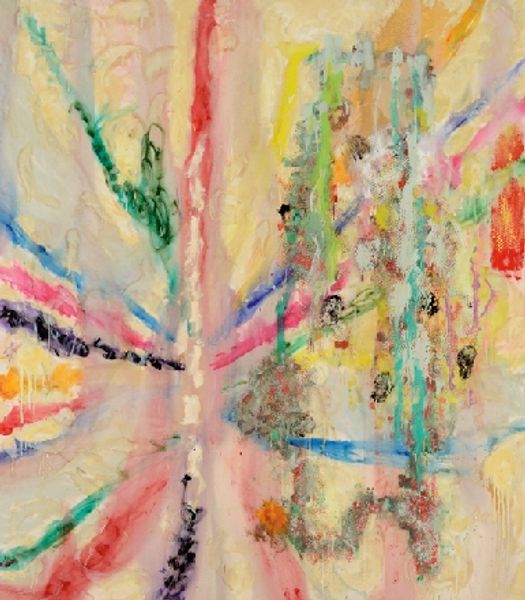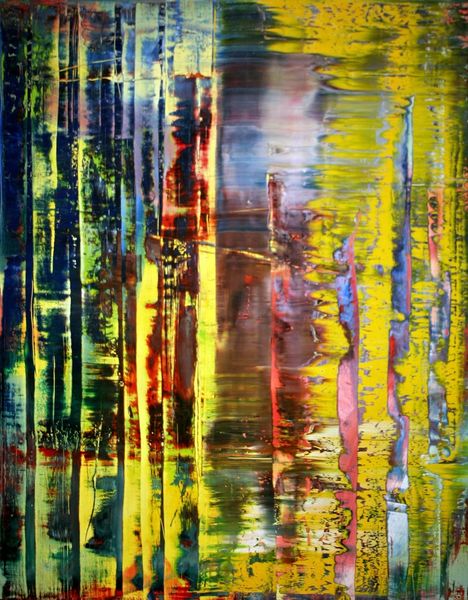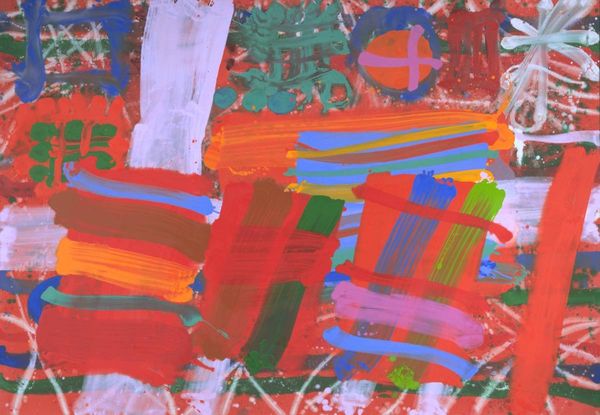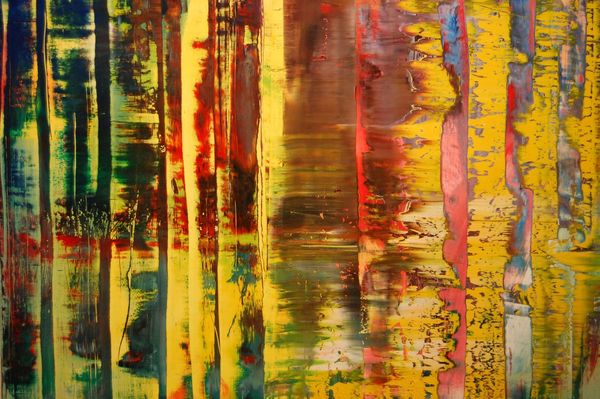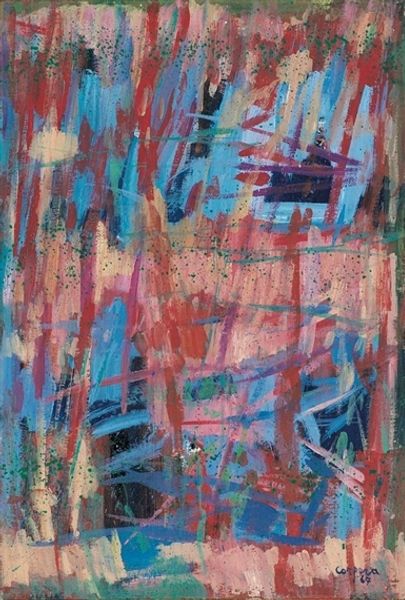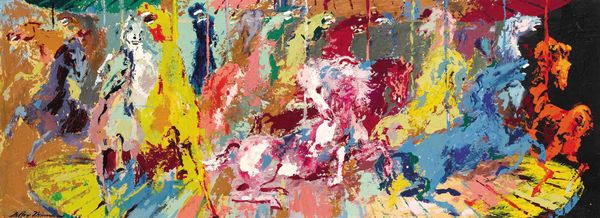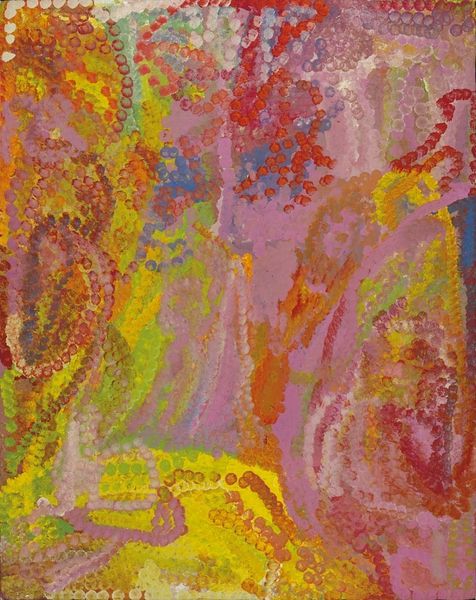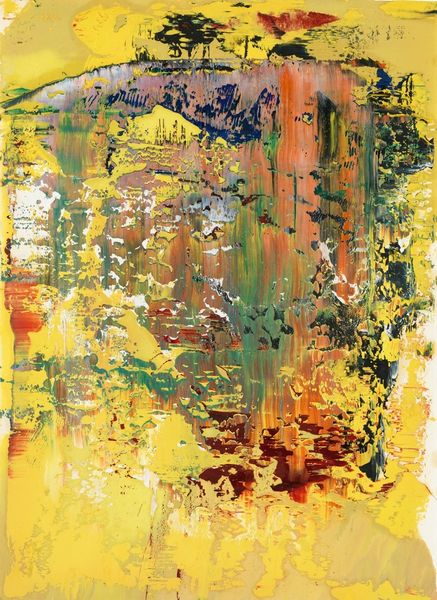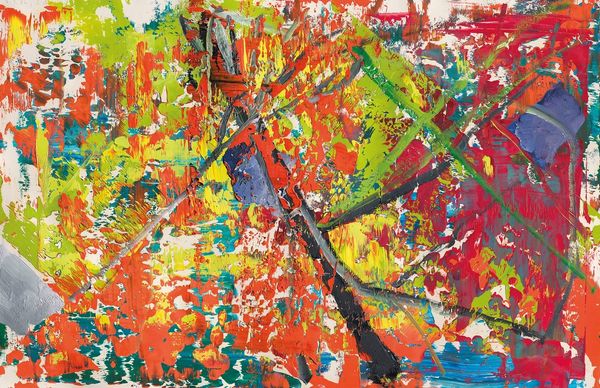
#
capitalist-realism
Copyright: Modern Artists: Artvee
Curator: What a riot of color. It feels almost Fauvist in its exuberance. Editor: Indeed. Let's delve into Gerhard Richter's "Arnold," created in 1983. Richter is, of course, a towering figure in postwar German art. Curator: Yes, but what exactly is Richter expressing? The almost violent brushstrokes in the lower portion—particularly the jarring red juxtaposed against the yellow—evoke a certain unease. Is this a reflection of social turmoil? Editor: Perhaps, or perhaps not directly. The politics of imagery in Germany, particularly regarding its past, often manifested in abstraction. Here, you see layered acrylic paint seemingly applied, scraped away, then reapplied. It creates this sense of historical palimpsest. Curator: A palimpsest! I like that reading. Structurally, the two opposing diagonal lines cut across the composition—cleaving it almost. Is it creating an illusion? The texture of the “matter painting” builds upon layers of formal engagement—the red against the yellow create optical unrest, with each plane simultaneously fighting for, and receding from, attention. Editor: An apt description. We must remember, Richter emerged from a society grappling with memory, representation, and truth. Abstract Expressionism afforded artists a space to address difficult themes without resorting to direct illustration. Curator: So, is "Arnold," in essence, a critique of representational painting in post-war Germany, offering social commentary via the denial of obvious meaning? Editor: I would posit that, yes. This act of layering and obscuring suggests a deliberate resistance to easy interpretation, mirroring a nation’s complex relationship with its own narrative. Curator: It's amazing how such a seemingly chaotic composition can be so loaded with historical context. Now I can read the green slashing lines above it like graffiti obscuring memories of idyllic peace. Editor: The brilliance of Richter lies in this delicate balance between the purely visual experience and its subtle socio-political underpinnings. Hopefully, it spurs one to contemplate on our society's perception of social meaning and construction of narrative.
Comments
No comments
Be the first to comment and join the conversation on the ultimate creative platform.
